Maintenance
Inflation
HOW TO SET TIRE AIR PRESSURE
Did you know your tires can be under-inflated and still look properly inflated? Nitto Tire highlights the signs of improper inflation, explains where to find the proper inflation pressure for your vehicle and how and when to check your air pressure.
ABOUT AIR PRESSURE
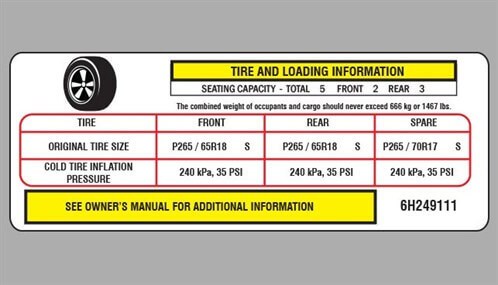
With the right amount of air pressure, your tires will perform better, wear longer and save fuel. The "right amount" of air pressure for the original equipment or same size tires is specified by the vehicle manufacturer and may be different for front and rear tires. Check with your Nitto dealer if the replacement tires on your vehicle are no longer the same size as the O.E. tires.
WHERE TO FIND THE CORRECT O.E. INFLATION PRESSURE
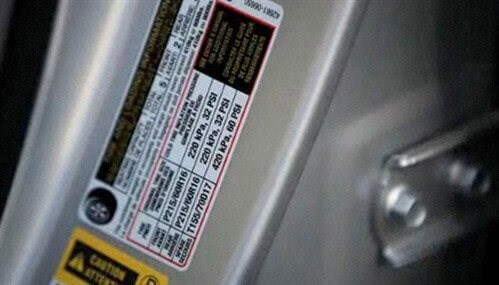
You will find the recommended pressure on a placard or sticker in the doorjamb, glove compartment, or near the gas cap. If your vehicle does not have a placard, check the owner's manual or consult the vehicle manufacturer, tire manufacturer, or your local tire dealer. The tire placard tells you the maximum vehicle load, the cold tire pressure, and the tire size recommended by the vehicle manufacturer.
USING A TIRE PRESSURE GAUGE
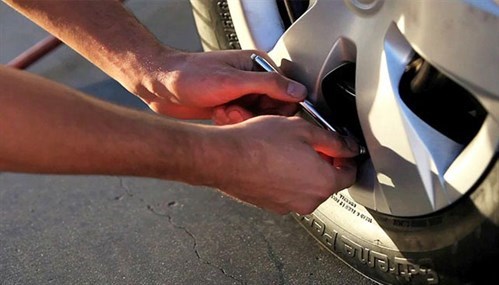
Check inflation pressure (including the spare) at least once a month and before every long trip. Tires must be checked when they are cold (before they have run a mile). If you must drive over a mile for air, measure and record the underinflation amount of each tire. Upon arriving at the service station, measure each tire's inflation again and if the pressure has increased, adjust the amount of additional air pressure needed. For example, if cold pressure should be 35PSI, but cold pressure was 28PSI, and current pressure is 33PSI, you should inflate the warm tires to 40PSI and recheck them again when cold.
HOW DO TIRES LOSE PRESSURE?
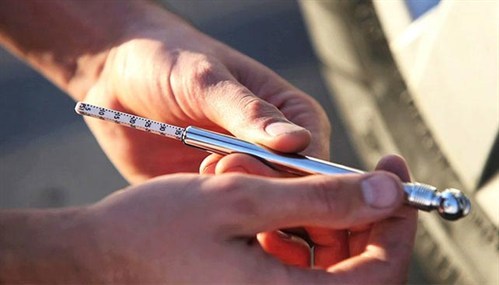
Tires lose pressure naturally through the process of permeation.
Changes in outdoor temperature can affect the rate at which tires lose air. This change is more pronounced in hot weather. Generally speaking, a tire will lose one or two pounds of air pressure per month in cool weather or even more in hot weather. Remember, underinflation is the leading cause of tire failure, so check inflation pressure regularly.
OTHER TIPS
- Never "bleed" or reduce air pressure when tires are hot. It is normal for pressures to build up as a result of driving.
- Make sure all tire valves and extensions are equipped with valve caps with rubber gaskets to keep out dirt and moisture.
- Have a new valve stem assembly installed whenever a tire is replaced.
- Underinflation or overloading creates excessive heat, and can lead to tire failure, which could result in vehicle damage and/or serious injury or death.
Rotation
ABOUT TIRE ROTATION
Sometimes irregular tire wear can be corrected by rotating your tires. Consult your car's owner's manual, the tire manufacturer, or your Nitto Tire dealer for the appropriate rotation pattern for your vehicle.
If your tires show uneven wear, ask your Nitto Tire dealer to check and correct any misalignment, imbalance, or other mechanical problem involved before rotation. Sometimes front and rear tires on a vehicle use different pressures. After rotation, adjust individual tire air pressures. The proper inflation section has more information.
The purpose of regularly rotating tires is to achieve more uniform wear for all tires on a vehicle. Before rotating your tires, always refer to your individual owner's manual for rotation recommendations. If no rotation period or pattern is specified, you should consider rotating your tires, front to back, every 6000 miles or at least every 7500 miles. Irregular wear may require more frequent rotation.
POPULAR ROTATION PATTERNS
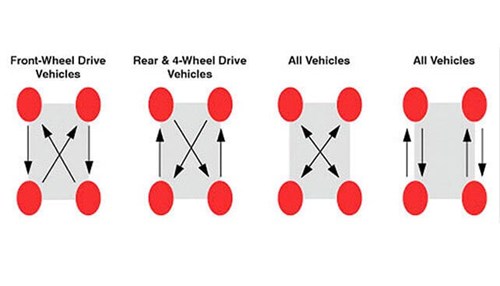
Sometimes tires cannot be rotated according to popular patterns. Such tires include uni-directional tires with asymmetric tread designs. Also, some vehicles may have different sized tires mounted on the front and rear axles, and these different sized tires may also have rotation restrictions. Check your owner's manual or visit your Nitto Tire dealer for recommendations for these special cases.
Balance
THE IMPORTANCE OF PROPER TIRE ROTATION AND BALANCE
Everyday driving can affect the balance of your tires. Nitto® Tire explains how your tires can come out of balance and how routine inspections for tire rotation and balance can extend the life of your tires and increase your driving enjoyment.
ABOUT BALANCE
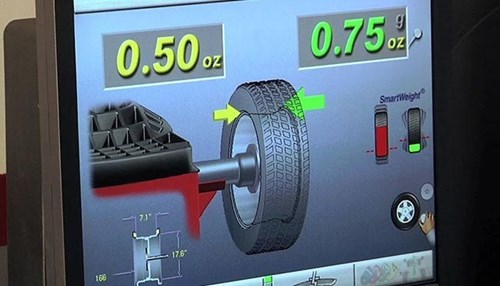
You may have noticed the small weights placed on the rim of your tire. These weights help the tire and wheel assembly remain balanced at all speeds. At high speeds a tire that is not balanced properly can generate severe vibrations. An unbalanced tire and wheel can also lead to irregular treadwear.
Some expensive alloy wheels can be damaged with the use of standard lead weights and may require the use of a coated weight. See your Nitto dealer for more information.
Alignment
THE IMPORTANCE OF WHEEL ALIGNMENT
Proper wheel alignment can help extend tire life. Nitto® Tire helps you identify if your vehicle is out of alignment, explains what the alignment process includes, and defines common alignment settings such as positive and negative camber and toe-in and toe-out.
ABOUT ALIGNMENT

Proper alignment is essential for optimum performance and maximum tire life. Misalignment in the front or rear, improperly operating brakes or shock absorbers, bent wheels, worn bushings, and any other mechanical problems can cause uneven and rapid treadwear. Each of these situations should be corrected immediately by your Nitto dealer.
Front-wheel-drive vehicles and those with independent rear suspensions require special attention, and should be checked periodically.
A bad jolt, such as hitting a pothole, can throw your vehicle out of alignment. Such an impact can also bend the rim, causing a loss of air pressure and damage to your tires with little or no visible evidence present.
Inspection Tips
UNEVEN WEAR
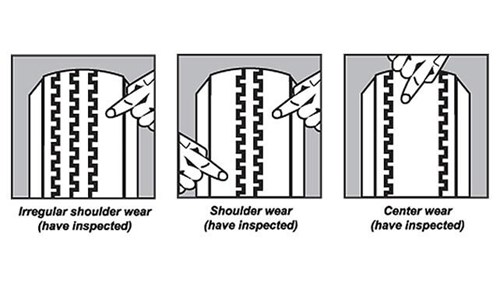
At least once a month, inspect your tires closely for signs of uneven wear. Uneven wear patterns may be caused by improper inflation pressures, misalignment, improper balance, or suspension neglect. If not corrected, further tire damage will occur. If you discover uneven wear, bring your car to your nearest Nitto dealer. In many instances, the dealer can correct the problem so you can continue to use your tires.
EXCESSIVE WEAR
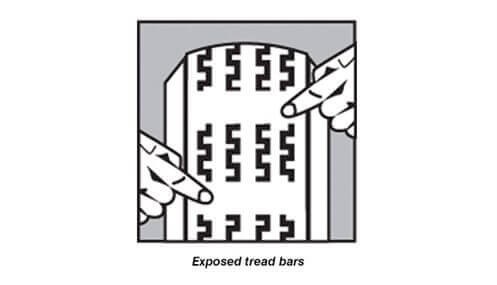
When the tread is worn down to one-sixteenth of an inch, the tire is worn out and it is time to replace it. Built-in tread wear indicators, or "wear bars," which look like narrow strips of smooth rubber across the tread, will appear on the tire when that point of wear is reached.
OTHER THINGS TO LOOK FOR
- Look for any stones, bits of glass, metal, or other foreign objects in the tread or sidewall. These may work deeper into the tire and cause air loss.
- If any tire continually needs more air, have your Nitto dealer check to find out why it is leaking. Damage to the tire, wheel, or valve may be the problem.
- If you have any further questions please visit a Nitto Tire dealer.
Repair or Replace
REPAIR OR REPLACE
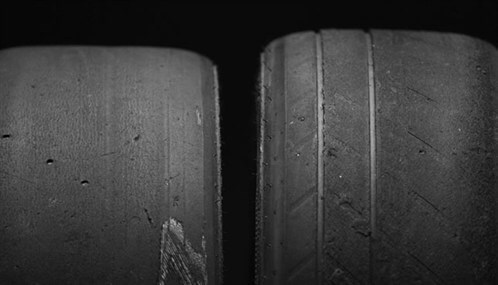
Which types of tire injuries are serviceable? The answer to that question depends upon the injury itself. Every injury, including punctures, scrapes, bulges, separations, or cuts should be evaluated by your Nitto tire dealer.
Air loss due to punctures can ruin tires that might have been saved had they been removed in time for proper repair. Gradual air loss raises a tire's operating temperature. This can cause some of the components to separate, or damage the tire body in ways that create rapid or sudden air loss.
You can never play it too safe; if your tire shows visible damage or you suspect hidden damage due to small punctures or impact, consult your Nitto Tire dealer.